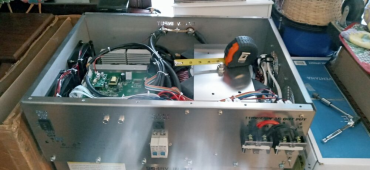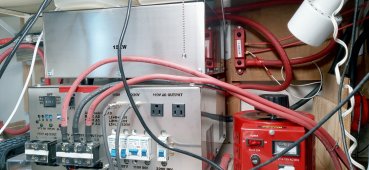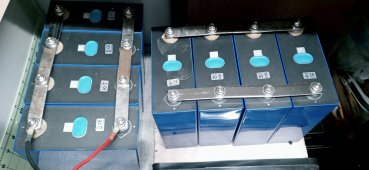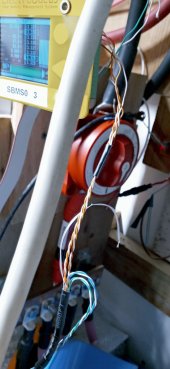Quality and crap are how I refer to the two catagories.Thanks for that explanation and continuing this dialog, it is useful for me.
OK let's set PWM aside as I believe that all modern inverters use PWM whether they have large transformers and switching at input or small and switching at output. Your position is that anything PWM is HF. Fine, let's assume that all the suppliers that produce what they call "LF" inverters (and many also produce what they call "HF" inverters) just use LF as a marketing term to describe a category that has a large, heavy iron, low frequency transformer at the core of the design.
Names aside, I see mainly two classes of designs for power inverters on the market, and I believe that most or all use PWM controllers:
1) "LF" designs that are heavy, roughly cubic in form factor, contain large heavy low frequency transformers, and have better surge.
2) "HF" designs that are lighter, long narrow form factor, smaller/higher frequency magnetics, and poor surge
These are two different topologies. The first historically switched at line frequency, but modern designs use a PWM controller mated to a large low frequency transformer. I have seen these referred to as "high/low" inverters, Victron calls it "Hybrid HF", other "LF" inverter manufacturers speak vaguely about new techonologies in their "LF" inverters and I'll guess that is just a similar use of PWM with large low frequency iron.
The second type, if I understand correctly, typically switches at the output not input and does not use a large low frequency transformer.
Your position seems to be that there is no inherent advantage for either of these topologies with regards to surge performance. The only difference driving the observable performance difference between the two classes for products on the market is that the "LF" models are built by quality manufacturers who build in sufficient margin, and the "HF" models are built as light and cheap as possible, cutting corners and eliminating margin in favor of low cost.
I understand your position, but I'm not sure I buy it yet. It seems at odds with the vast majority of what I can find on this topic. Perhaps you are right and the entire industry is deluded in thinking that large transformer-based designs are better for surge performance. But I'd like to read some papers from authoritative sources about that, I hope you can point me to some references.
In the interim, theory aside, what I see actually on the market are large heavy expensive cubes that have good surge, and long narrow cheap lightweight inverters that have poor surge. Different topologies and different form factors. Some manufacturers carry both categories. Presumably they build quality into their "LF" line and skimp and cut corners for their "HF" line?
What do you call those two classes of products?
There is a third catagory, that I keep mentioning that everyone seems to ignore. That is a true low frequency inverter (square or modified wave) married to a ferroresonant transformer. This is the origin of the LF = big surge meme.
A ferroresonant transformer is used in industrial settings to provide noise filtering and AC line regulation. I have used them. They work. The are also expensive, heavy, inefficient and overheat if you don't have at least a 20% load on them.
This is what people are thinking of when they think big transformers = big surge.
Normal power transformers provide some limited noise filtering and no voltage regulation nor do they increase surge capability.
You could put a ferroresonant transformer on the worst piece of crap HF inverter and it would instantly gain increased surge capability and lower output noise.
Conversely Victron or one of the other high end vendors could easily design what you guys refer to as a HF inverter with tons of surge capacity. They don't because using a power transformer has other advantages. They are safer and make it easier to adapt to different countries voltages and safety requirements.
Due to the expense and drawbacks to ferroresonant transformers, nobody is designing ferroresonant transformers into new inverters to my understanding. But companies are more than willing to cater to their customers misunderstanding if that increases sales. So companies using HF PWM inveters with power transformers call them low frequency. It is easier than trying to explain reality to people who think they understand.
That is where I was when I entered this thread a couple of weeks ago. The whiff of BS wafting off the entire LF thing made me suspicious so I dug deeper.
Part of of the reason I selected Victron is because they don't engage in BS. They come right out and say it. Our inverters have surge capability because we design them to have it.
The Chineseum inverters are basically designed to not have surge capability.
Last edited:






